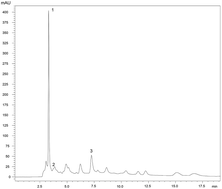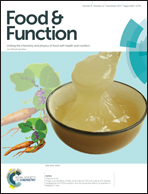The chemical composition, nutritional value and antimicrobial properties of Abelmoschus esculentus seeds†
Abstract
Okra is a vegetable crop usually used for its immature pods. The harvest stage (fruit size) depends on consumers’ preferences and the fruit that does not meet market requirements is being disposed of. Considering the short time interval from the setting of the fruit to the harvest stage, the present study evaluates the nutritional value, chemical composition, and antioxidant and antimicrobial properties of okra seeds from genotypes cultivated under Mediterranean conditions, as an alternative end-use product. For this purpose, seeds from four okra cultivars and local landraces commonly cultivated in the Mediterranean basin, as well as seeds from four commercial cultivars from North America were collected at the maturity stage. A significant variation between the studied okra genotypes was observed for all the evaluated parameters. Okra seeds of cv. “Silver Queen” are a significant source of proteins and minerals, such as Ca, K, Fe and Zn. Seeds of all the genotypes contained significant amounts of gamma-tocopherols, liposoluble pigments, and linoleic and palmitic acid. The total phenol content differed between the studied genotypes and correlated with the EC50 values of the Reducing Power assay. Seed extracts exhibited significant antibacterial properties, especially against Listeria monocytogenes, Salmonella enteritidis and S. typhimurium, while fungistatic and fungicidal properties were better than ketoconazole in a genotype dependent manner. The antifungal properties of seeds were noticed towards all tested fungi, where Aspergillus versicolor and Caldosporium cladosporioides were the most sensitive species. Moreover, two of the tested genotypes (“Boyati” and “Clemson Spineless”) exhibited higher fungistatic and fungicidal properties than ketoconazole. In conclusion, okra seeds could be considered as innovative okra products and could be proposed for alternative end-uses in the food and pharmaceutical industries, especially for functional foods with antimicrobial and bioactive properties.



 Please wait while we load your content...
Please wait while we load your content...